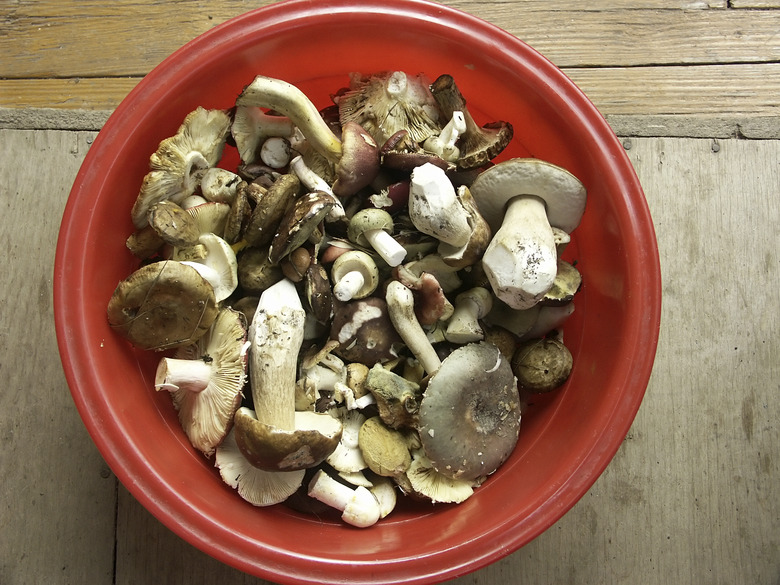How To Identify Wild Mushrooms In North Carolina
If you're looking to identify wild mushrooms in North Carolina, you might be in for a bit of a challenge! Researchers estimate that over 3,000 different species of mushrooms grow in North Carolina, so it's unlikely that you'll be able to find and identify all of them. However, you can take a quick look into which species are toxic and which are commonly found and edible.
Mushroom Identification in North Carolina
Mushroom Identification in North Carolina
Before attempting to identify any mushrooms in North Carolina, it's incredibly important to understand a few key guidelines. Even though you can find resources to help you identify mushrooms, such as a North Carolina mushroom field guide, you should never touch or eat any mushrooms that you find unless you've verified that they're safe to collect and consume.
Many clubs and organizations for mushroom foraging exist. You should reach out to the adults in your home, at your school or in your library for additional assistance.
Toxic Mushroom Identification in North Carolina
Toxic Mushroom Identification in North Carolina
Before diving into any potentially edible or harmless mushroom varieties, you should know how to identify some of the most dangerous species in North Carolina so that you can avoid coming in contact with anything potentially dangerous to your health. Some mushrooms are only toxic if eaten and others can potentially harm you if you touch them, so the best bet is to simply avoid them entirely!
- Amanita chlorinosma – This toxic species, commonly found growing in oak and pine forests, has an off-white coloration. The base of the stalk is typically enlarged, and the cap has a powdery texture. It smells strongly of chlorine or rotting meat.
- Amanita muscaria – Also known as fly agaric, this toxic species has a white stem and reddish cap with white "scales" or wart-like growths. They can reach up to a foot in diameter and stand between six and eight inches tall.
- Amanita bisporigera – Typically known by the haunting name death angel, this toxic species is relatively tall, smooth and white in coloration. It grows up to four inches across the cap and up to five inches tall. This species is incredibly common in North Carolina.
- Leucocoprinus birnbaumii – Also known as the flowerpot parasol, this toxic species commonly grows in potted plants. It is small, bright yellow in color, and has a powdery bell-like cap. It has a slender stalk which is also coated in yellow powder.
- Omphalotus olearius – Better known as the jack-o-lantern, this toxic species has an orange or yellow-orange coloration and grows in clusters. It grows at the base of oak and other deciduous trees in clusters of up to 20 individuals. This species also displays bioluminescence.
Edible Wild Mushrooms in North Carolina
Edible Wild Mushrooms in North Carolina
As mentioned above, it's important to ensure a qualified adult identifies any potentially edible mushroom before you handle or consume it. Many toxic mushrooms look quite similar to other non-toxic species. Always use extreme caution when collecting mushrooms.
- Fistulina hepatica – Known as the beefsteak polyphore, this species has a granular texture atop its reddish-colored cap. Unlike typical mushrooms, this species has a fan-shaped fruiting body and typically grows horizontally off the side of rotting logs or trees. In most cases, this species looks like a slab of raw beef sticking out of the side of a tree.
- Craterellus odoratus – Also known as the fragrant chanterelle, this species often lives in clusters and has bright yellow coloration. It has a ruffled, flower-like appearance and a waxy or shiny texture on the surface.
- Laetiporus cincinnatus – With the apt nickname chicken of the woods, this edible species can be found throughout North Carolina. It tastes similar to chicken, and typically grows in clusters of tan or slightly reddish fruiting bodies.
Cite This Article
MLA
Zinni, Yasmin. "How To Identify Wild Mushrooms In North Carolina" sciencing.com, https://www.sciencing.com/identify-wild-mushrooms-north-carolina-6508092/. 1 December 2021.
APA
Zinni, Yasmin. (2021, December 1). How To Identify Wild Mushrooms In North Carolina. sciencing.com. Retrieved from https://www.sciencing.com/identify-wild-mushrooms-north-carolina-6508092/
Chicago
Zinni, Yasmin. How To Identify Wild Mushrooms In North Carolina last modified March 24, 2022. https://www.sciencing.com/identify-wild-mushrooms-north-carolina-6508092/
